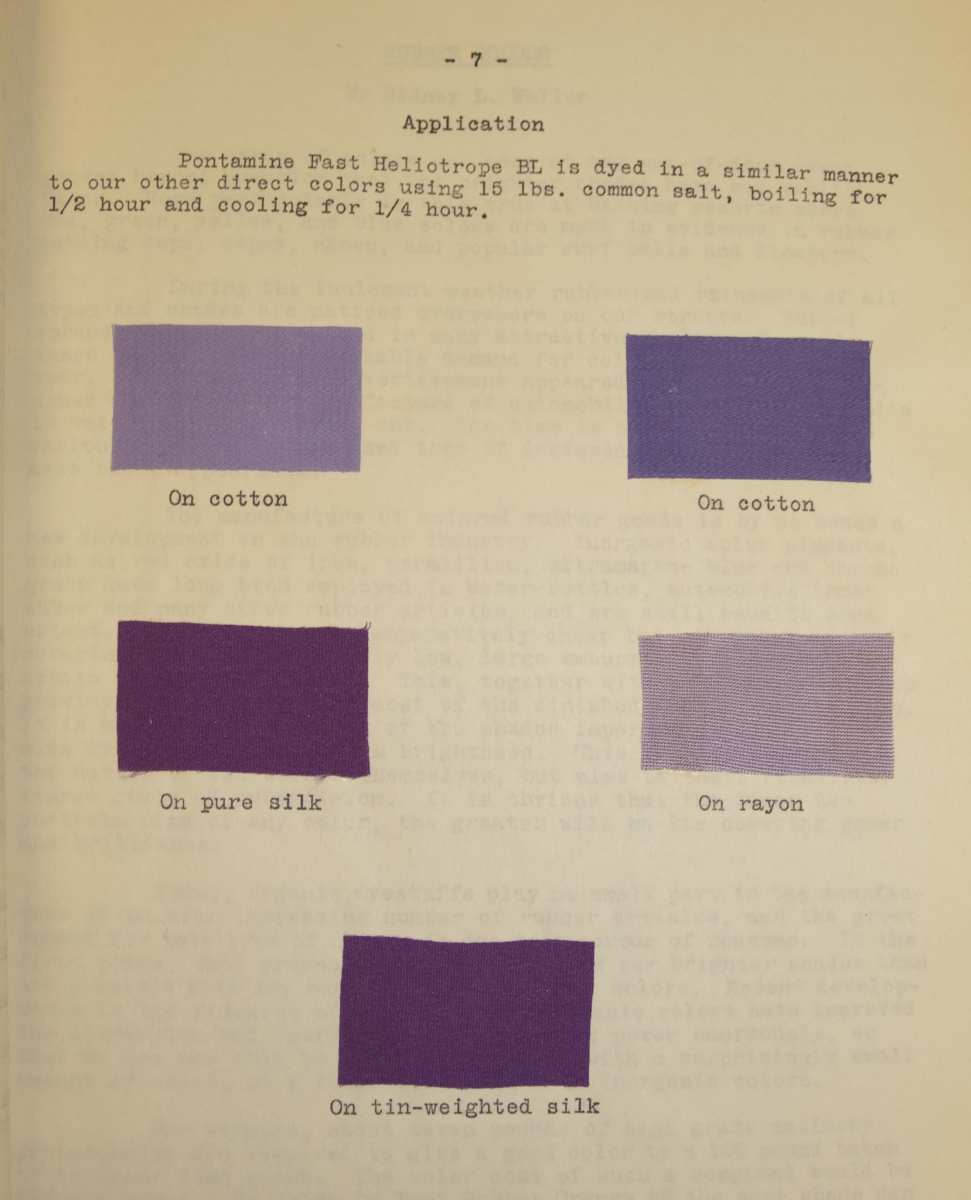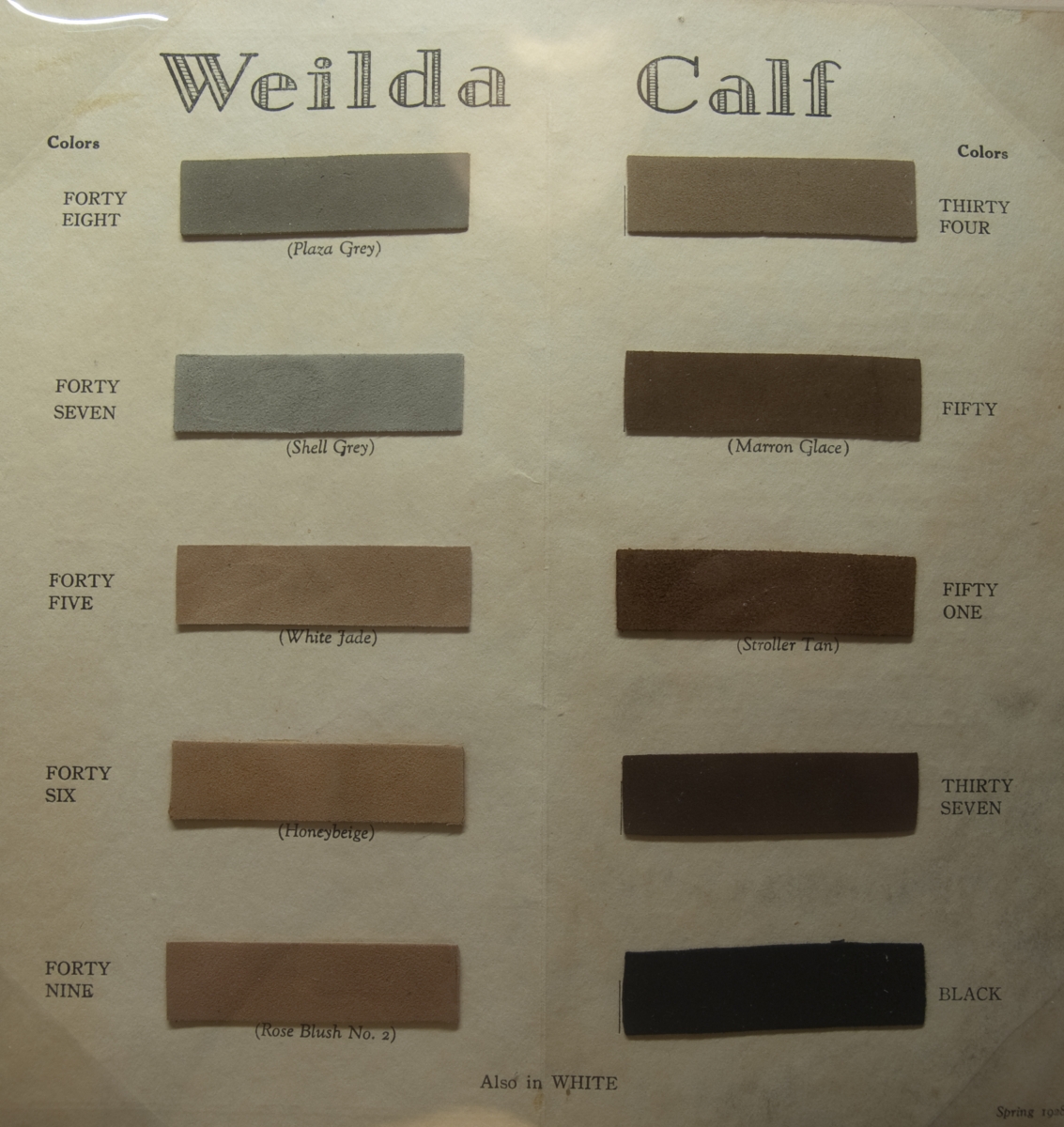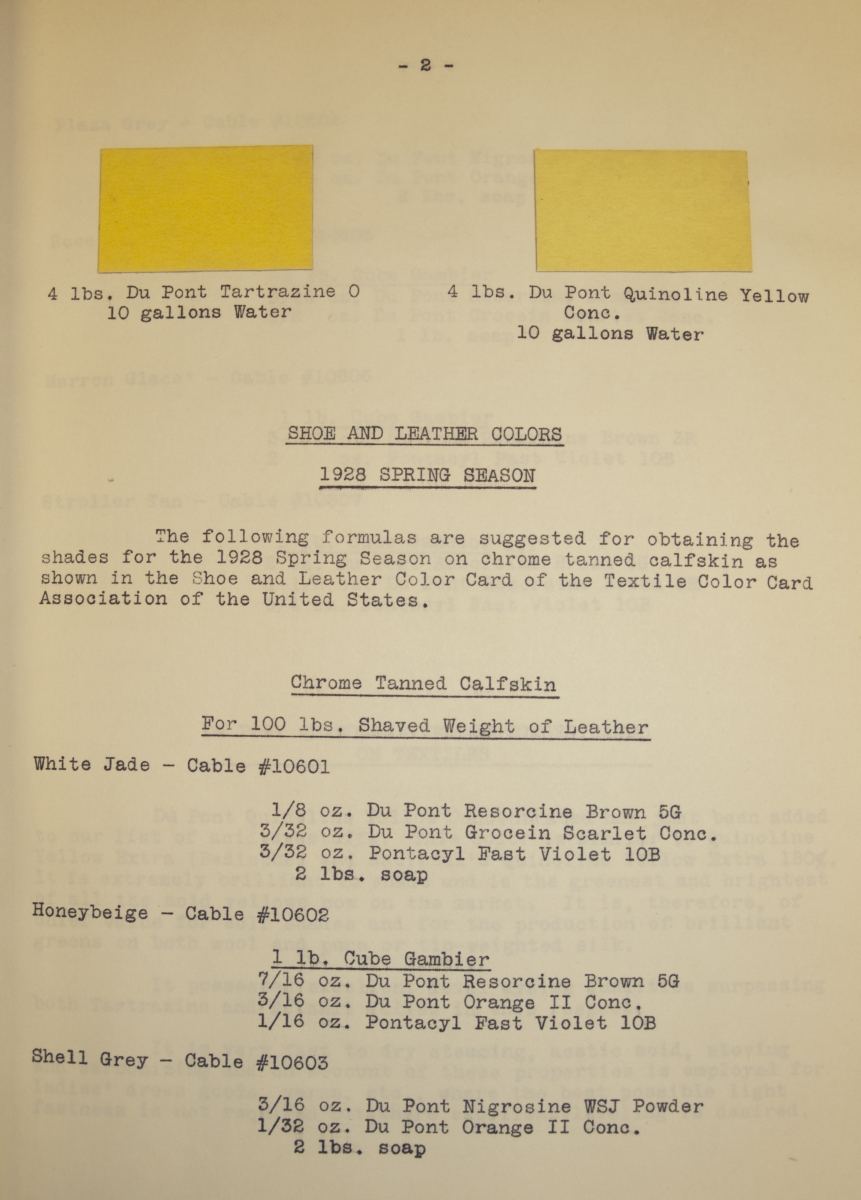The Hagley Library has much to offer to those looking to learn something new about the manufacture and sale of consumer goods, among many other topics. Working here, I frequently find interesting relationships between different collection materials. These links can further flesh out a story. In the case of the materials to be highlighted here, the tale is truly about flesh – or suede to be exact.
While evaluating the condition of volumes of the Technical Bulletin from the DuPont Co., I noticed several references to another collection, the Textile Color Card Association, which is undergoing treatment in the conservation lab. The Technical Bulletin may not sound like scintillating reading. The covers don’t have any flashy decoration or illustration to draw you in. However, what is inside is fascinating. As with all things, that might be a matter of opinion, but hear me out.
The DuPont Company’s Technical Bulletins on dyestuffs show how the company provided color dyes and dye combinations to create the specific colors of the season. At the same time they were introducing new, brighter, more varied, and more colorfast options. This particular series of volumes on dyestuffs covers 1921 – 1974. Inside are all sorts of useful data, recipes, and results of studies that DuPont supplied to the dye trades and printing industries. It is easy to imagine how new technological advances in synthetic dyes could influence fashion, whether the colors were first picked up by advertising, home décor, and packaging, or first used by textile industries. These Bulletins include samples of colors on different substrates, such as silk, rayon, and wool. In some instances, both the saturation and the hue change depending on the substrate.
Other samples indicate how new mixtures of dyes could be used to reproduce an earlier season’s colors more easily or cheaply with newly synthesized chemicals. The majority of the samples appear to be unfaded, in nearly perfect condition. (At least where the color is concerned.)

Samples of different fibers colored with the same violet dye, as shown in the Technical Bulletin
Basically anyone who was purchasing dyestuffs from DuPont could use this information to help them produce the most consistent and lasting colors. DuPont also discussed the limitations of their colors, like how aniline dyes could never be made to be lightfast on paper. One other thing makes this set of volumes unique: it was the classified version for use by DuPont chemists, salesmen and other insiders. The versions given to other companies had certain inside trade secrets removed.

Example of colors for leathers for the 1928 spring season, from the Textile Color Council Association
The Technical Bulletin from 1928 references the Textile Color Card Association spring colors for leather goods. The T.C.C.A. hunted down the trending colors from fashion houses in Paris, and selected the upcoming season’s palette for use by companies in the textile, leather, and garment production industries in America. These palettes were distributed as color cards each season. The DuPont dyestuffs division in turn recreated the fashionable colors and supplied the recipes specific to shades represented on the color cards. Some of the leather colors, as named by the T.C.C.A., were White Jade, Honey Beige, and Shell Grey. For chrome tanned calfskin the formula DuPont supplied to produce the color Honey Beige consisted of the following: 1 lb. Cube Gambier, 7/16 oz. DuPont Resorcine brown 5G, 3/16 oz. DuPont Orange II conc., and 1/16 oz. Pontacyl Fast Violet 10B (all used per 100 pounds of shaved leather). Gambier is one component that probably was procured from a supplier other than DuPont, since it was dying material naturally derived from gambier vine leaves.

DuPont formulas for shoe and leather colors of spring 1928
It is fascinating to see that the colors selected by the T.C.C.A. were provided by DuPont. Now all that remains is to find an actual pair of shoes dyed with Honey Beige or Shell Grey tones!
Laura Wahl is the Library Conservator at Hagley.
